Útels
The Útels1 are native to western Dragonía, with the vast majority inhabiting the three countries in Ela'k Forest (namely Kaiqonon, Kanot and Malónat) and smaller communities found in the western city-states and colonies of the Ameders.
Most Útels are dark skinned (often likened to copper), with black, brown, red and rarely blond hair, and brown, green or amber eyes. The ears are somewhat pointed, and they have a natural affinty to Air magic.
During this time the new city-states often fought among themselves, until the aged chief Zynai convinced her son and the remaining tribal chiefs to make peace and find a way to make the peace last indefinitely. An alliance was formed between the cities, ruled by an elder council instead of tribal chiefs, marking the beginning of Útel civilization in the form of the Útel Alliance.
When the Plain of Spirits was discovered some 4000 years ago, the Útels established colonies there which eventually became a major source of cereals. Centuries later, the colonists declared independence, which resulted in the The Summer Wars, a series of battles which lasted a generation, at the end of which the colonists (now calling themselves Móerkels ) were granted independence in exchange for continuing to sell grains to the Útels.
A massive explosion in central Dragonía some 800 years ago marked the appearance of a terrible monster, which destroyed the Móerkel realm and caused chaos and destruction wherever it struck for the next five centuries. The monster attacked Ela'k Forest several times, each strike causing great unrest among the Útels, despite their warriors figuring out early on how to wound and drive away the beast. In 43 a.Dr (after the creature appeared) the old Útel Alliance splintered into three countries, and many Útels fled out of Ela'k Forest to the uncharted north during the third century a.Dr.
Fortunately, with the monster's disappearance around 500 a.Dr, the Útels began to rebuild, and established contact with the new cultures that formed during the past centuries, namely the Ameders and Mörkels.
In every town and city there are neighborhoods housing families within each caste, elders from each family meet daily to discuss matters relating to their caste. Problems which prove difficult to solve are handled by representatives from each caste or, failing that, are solved by the Yt-Þarizen, a council representing every settlement in the country and whose decision is final.
Everything is served in clay bowls of various shapes and sizes, some with a notch on the rim to make drinking easier. Most people sit on mats on the floor, except for elders, who have the honour of sitting on benches instead, furthest from the entrance. Guests are (usually) allowed to sit by these benches as a sign of hospitality. I. Smoked caterpillars with onions and spices. II. Vine leaves stuffed with caterpillars and grape must. III. Acorn cakes with almonds, raisins and honey. IV. Spicy ljúra stew. V. Boiled ykan egg. VI. Steamed bee larvae with acorn meal. VII. Nal-grain bread. VIII. Boiled giant salamander meat. IX. Rabbit with lettuce and almonds. X. Pork with honey and gaþól fruit. XI. Fish soup with onions and tubers. XII. Wine. XIII. Mead. XIV. Núva'þil, spiced mixture of wine and mead. XV. Giant salamander eggs in vinegar.
Members of each caste wear a distinctive cloak when working or outside in general to ease identification, but sometimes switch a fancier one such as a feather cloak during celebrations.
Cloaks and loincloths are almost exclusively woven from the hairs of woolly rabbits. Footwear consists of sandals made of leather or plant fibers, with fancier ones being particoloured or adorned with colourful beads.Headgear is relatively uncommon, mostly consisting of either basket-like hats or kerchiefs.
Útel architecture varies somewhat from one part of Ela'k Forest to another: the people in Kalot and other towns along the Klalaþan Sea make greater use of stone than elsewhere, while major settlements along the river Dú'þal to the southeast are densely populated, with upper floors connected via balconies and bridges to reduce traffic on the streets. Layout of a typical Útel two-story home, with a fireplace surrounded by mats to the left, ancestral shrine at the bottom, stairs leading to a loft, storage and the elders' bedrooms in the middle, and walled garden to the right.
Songs are an important part of teaching children the many different roles of their castes, examples include animal songs which describe the behaviour and proper handling of animals, and colour song to remember the different colour combinations of each castes' cloaks. Many daily tasks have their own songs as well, such as grinding acorns, crushing grapes and weaving, used by people to make time go by faster and help keeping a rhythm.
The written language is based on a syllabary of a myriad rectangular symbols, and has changed relatively little throughout millennia, so even Útels whose dialects are nigh unintelligible can use it to communicate. Reed pens, ink made of soot or ochre, and papyrus are the main writing materials, while temporary records are made using wooden or bronze styluses and wax tablets.
Útels practice cremation, after the deceased one's hair has been shorn and stored in a special jar and stored in an ancestral shrine. A widespread belief is that the afterlife is found under the sea, so the urn must be cast down Qaþúlanz Falls (where the river Óf end in the sea) to ensure the dead don't become revenants.
Traditional equipment includes bronze swords, spears, axes and daggers, lamellar armour, large wooden shields, helmets and wrappings around arms. Each tribe has its own distinct war paint, details on shields and helmets.
Warriors are expected to adhere to a strict set of rituals and code of honour, such as never striking an enemy from behind or using bow and arrows in battle.
Most Útels are dark skinned (often likened to copper), with black, brown, red and rarely blond hair, and brown, green or amber eyes. The ears are somewhat pointed, and they have a natural affinty to Air magic.
History
Originally a tribe of Alalaríans, they embraced the teachings of chief Ela'k some 8000 years ago and spread their new culture across their forest realm, gradually supplanting that of the Alalaríans, safe for the three tribes who became ancestors of the Jaarels.During this time the new city-states often fought among themselves, until the aged chief Zynai convinced her son and the remaining tribal chiefs to make peace and find a way to make the peace last indefinitely. An alliance was formed between the cities, ruled by an elder council instead of tribal chiefs, marking the beginning of Útel civilization in the form of the Útel Alliance.
When the Plain of Spirits was discovered some 4000 years ago, the Útels established colonies there which eventually became a major source of cereals. Centuries later, the colonists declared independence, which resulted in the The Summer Wars, a series of battles which lasted a generation, at the end of which the colonists (now calling themselves Móerkels ) were granted independence in exchange for continuing to sell grains to the Útels.
A massive explosion in central Dragonía some 800 years ago marked the appearance of a terrible monster, which destroyed the Móerkel realm and caused chaos and destruction wherever it struck for the next five centuries. The monster attacked Ela'k Forest several times, each strike causing great unrest among the Útels, despite their warriors figuring out early on how to wound and drive away the beast. In 43 a.Dr (after the creature appeared) the old Útel Alliance splintered into three countries, and many Útels fled out of Ela'k Forest to the uncharted north during the third century a.Dr.
Fortunately, with the monster's disappearance around 500 a.Dr, the Útels began to rebuild, and established contact with the new cultures that formed during the past centuries, namely the Ameders and Mörkels.
Society
Útels are divided into three countries and furthermore into several tribes, but all share a similar language and culture. Their society is based on a democratic caste system, made of 26 castes (út: naa), each with it's own duties, traditions and distinctive cloak but none seen as higher than the other. Each town needs certain key castes to work together in order to survive, with larger towns having more specialized castes depending on the needs of the community.In every town and city there are neighborhoods housing families within each caste, elders from each family meet daily to discuss matters relating to their caste. Problems which prove difficult to solve are handled by representatives from each caste or, failing that, are solved by the Yt-Þarizen, a council representing every settlement in the country and whose decision is final.
Castes
Main article: Útel caste systemMarriage
Main article: Útel marriageCulture
Cuisine
Main article: Útel cuisine Traditional Útel cuisine is characterized by the use of acorns and almonds, leafy greens and tubers, fruits and berries, the meat of rabbits, pigs, poultry, large rodents and salamanders, freshwater fish, eggs, honey and various spices, wine and -to lesser extend- mead. Cereals are uncommon, dairy products are virtually unknown, and seafood and mushrooms are taboo.Everything is served in clay bowls of various shapes and sizes, some with a notch on the rim to make drinking easier. Most people sit on mats on the floor, except for elders, who have the honour of sitting on benches instead, furthest from the entrance. Guests are (usually) allowed to sit by these benches as a sign of hospitality. I. Smoked caterpillars with onions and spices. II. Vine leaves stuffed with caterpillars and grape must. III. Acorn cakes with almonds, raisins and honey. IV. Spicy ljúra stew. V. Boiled ykan egg. VI. Steamed bee larvae with acorn meal. VII. Nal-grain bread. VIII. Boiled giant salamander meat. IX. Rabbit with lettuce and almonds. X. Pork with honey and gaþól fruit. XI. Fish soup with onions and tubers. XII. Wine. XIII. Mead. XIV. Núva'þil, spiced mixture of wine and mead. XV. Giant salamander eggs in vinegar.
Apparel
Clothing
Útel men and women wear essentially the same type of garments, a kind of skirt wrapped around the waist and a cloak fastened on the right shoulder. The main difference is that women usually wrap the cloak around their body and fasten it with a belt or sash to cover their chest, though most cover it with a length of cloth underneath as well in case the cloak is removed. Elders are an exception, as many prefer to simply drape their cloak around themselves in a variety of ways without fastening it, especially at home.Members of each caste wear a distinctive cloak when working or outside in general to ease identification, but sometimes switch a fancier one such as a feather cloak during celebrations.
Cloaks and loincloths are almost exclusively woven from the hairs of woolly rabbits. Footwear consists of sandals made of leather or plant fibers, with fancier ones being particoloured or adorned with colourful beads.Headgear is relatively uncommon, mostly consisting of either basket-like hats or kerchiefs.
Jewelry
Jewelry is popular by Útel men and women alike, especially rings, earrings, bracelets and anklets made of various materials, including gold, silver, copper or bronze, carved and painted wood, feathers, claws and fangs, and precious or semi-precious stones, the latter which mostly originate from beneath the Vúrakesen Mountains. Necklaces are generally reserved for married Útels,Necklace designs: golden acorns and oak leaf, and ölan panther fang.
Art
Mosaic is considered the highest form of art in Útel society, which adheres to strict formulas regarding subject matter and proportions, with frescoes being the second best form of art and are not subject as strict rules. Sculpting is seen as less refined, but has much greater variety than the other two art forms, with some families specializing in certain subjects such as animals or famous locals.Architecture
Traditionally, most Útel structures are made primarily out of wood and stone, often featuring tiled roofs, floors of stone or rammed earth, small windows with shutters, and heavy curtains instead of doors. Members of the yl-naa, kagú-naa and lynóp-naa -carpenters', stonemasons' and potters' castes, respectively- work together at constructing all kinds of structures, including Útel Log Houses, steam-baths, gazebos and, to the southeast, public ancestral shrines.Útel architecture varies somewhat from one part of Ela'k Forest to another: the people in Kalot and other towns along the Klalaþan Sea make greater use of stone than elsewhere, while major settlements along the river Dú'þal to the southeast are densely populated, with upper floors connected via balconies and bridges to reduce traffic on the streets. Layout of a typical Útel two-story home, with a fireplace surrounded by mats to the left, ancestral shrine at the bottom, stairs leading to a loft, storage and the elders' bedrooms in the middle, and walled garden to the right.
Dance
Útels perform a variety of dances during festivals, either styles specific to their own caste or region, the latter usually being modern forms of ancient Alalarían dances and not restricted to any particular caste. The most complex dances are those performed by the warriors' caste, which often simulate ancient battles, complete with participants in formations, wearing full armour and wielding (wooden) weapons.Music
In Útel music, singing and playing instruments are generally separate forms of music, with the latter considered a higher form of music than the former. Common instruments include lyres, flutes, reed pipes and drums, while others such as water drums and bagpipes are more regional.Songs are an important part of teaching children the many different roles of their castes, examples include animal songs which describe the behaviour and proper handling of animals, and colour song to remember the different colour combinations of each castes' cloaks. Many daily tasks have their own songs as well, such as grinding acorns, crushing grapes and weaving, used by people to make time go by faster and help keeping a rhythm.
Traditional instruments of the Þebels and Valúnites, a goatskin bagpipe and water-drum, respectively
Language
The Útel language consists of a number of dialects spoken throughout Ela'k Forest, some of which are different enough from the rest to be almost considered their own languages. Much of the vocabulary is Alalarían in origin, with a few words and phrases borrowed from Jaarel, Ameder and Mörkel tongue.The written language is based on a syllabary of a myriad rectangular symbols, and has changed relatively little throughout millennia, so even Útels whose dialects are nigh unintelligible can use it to communicate. Reed pens, ink made of soot or ochre, and papyrus are the main writing materials, while temporary records are made using wooden or bronze styluses and wax tablets.
Naming traditions
Male names usually end with -ais (Anedais, Jaartorais, Þívelais), -ar (Fejókar, Úleþar, Yndóar), more rarely -ak (Ytak), -ys (Úþys) or -ó (Jaró). Female names tend to end with -ai (Ankúlai, Fekai, Zyrhelai) or -e (Herþe, Núrne, Ynhane), with local variations such as -úl (Bynúl, Neþahúl).Science and technology
Medicine
Medical treatment and creating medicine is in the hands of leh-naa, the healers' caste, whose methods are mostly derived from those used by the ancient Alalaríans. Útel medicine is some of the most advanced in all of Dragonía in terms of treating all sorts of ailments, but limited when it comes to understanding the cause and spread of diseases, which are variously believed to be caused by breaking taboos, being cursed, or the wrath of ancestral- or nature spirits.Magic studies
Members of the mages' caste or arv-naa are responsible for studying the flow of magic and how it affects all things, though only a small percentage of them are willing to sacrifice their health and fertility to become full-fledged mages or arvels, which in turn gives them a deeper understanding of the flow, especially that of the element of Air. They are invaluable for being able to predict the weather, and thus let people know when it's a good day to sow and harvest crops and gather certain plants in the wild.Religion
Main article: Útel ancestor worship Útel religion revolves mostly around ancestor worship, whether it be venerating culture heroes, founders of one's caste, or deceased relatives through prayers, songs, meditation, libations or other offerings. Worship of nature spirits, once given equal importance to ancestor veneration, has declined to the point that openly praying to the spirits (wether through words or offerings) has become a taboo practice.Útels practice cremation, after the deceased one's hair has been shorn and stored in a special jar and stored in an ancestral shrine. A widespread belief is that the afterlife is found under the sea, so the urn must be cast down Qaþúlanz Falls (where the river Óf end in the sea) to ensure the dead don't become revenants.
Warfare
Peace has generally been the rule rather than exception among the Útels for centuries, safe for endemic warfare among the early tribes during the first millennia or so in Útel history. Aside from the Summer Wars millennia ago and, more recently, battles against the monster of old, the warriors' main responsibility has merely been keeping the various martial traditions alive through traditional war dances and mock battles.Traditional equipment includes bronze swords, spears, axes and daggers, lamellar armour, large wooden shields, helmets and wrappings around arms. Each tribe has its own distinct war paint, details on shields and helmets.
Warriors are expected to adhere to a strict set of rituals and code of honour, such as never striking an enemy from behind or using bow and arrows in battle.
Útels are partly inspired by Hindus, natives of California, Iroquois and ancient Slavs.
1Original icelandic: Útelar, singular: Úteli
Diverged ethnicities
Encompassed species
Related Organizations
Related Items
Related Myths
Languages spoken
Related Locations


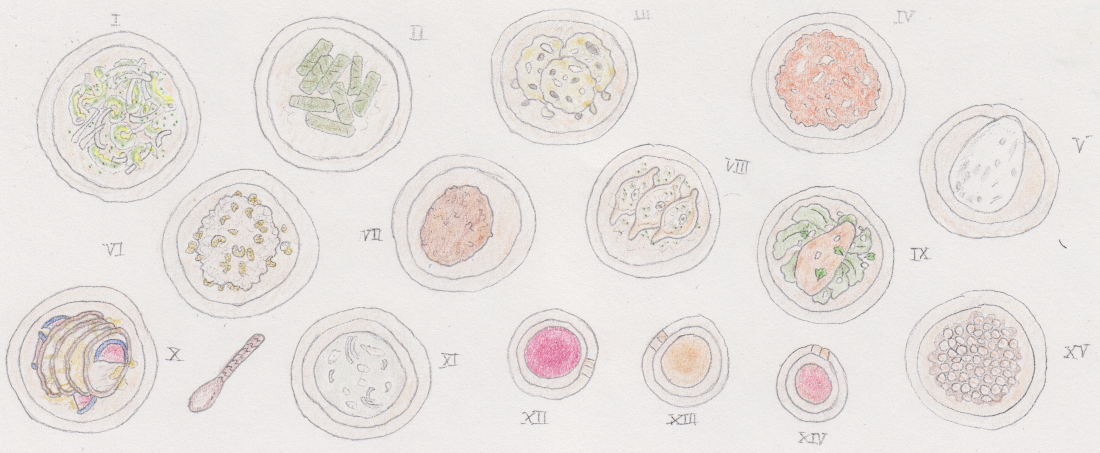
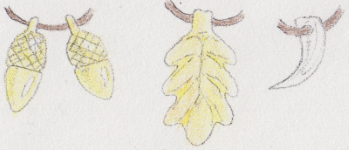
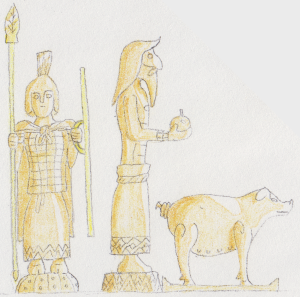
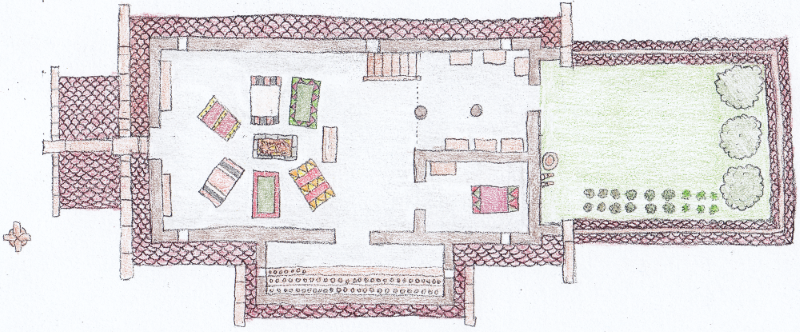
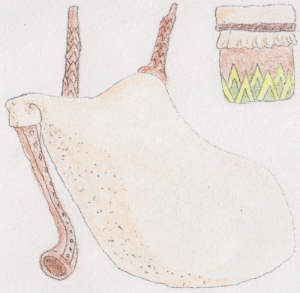

Comments